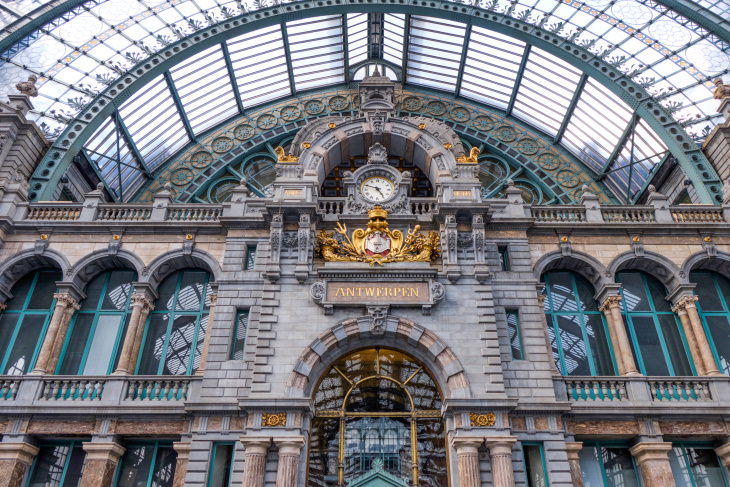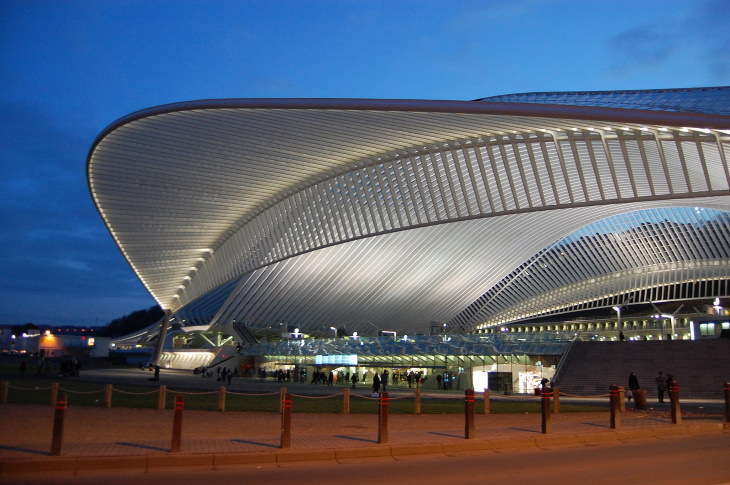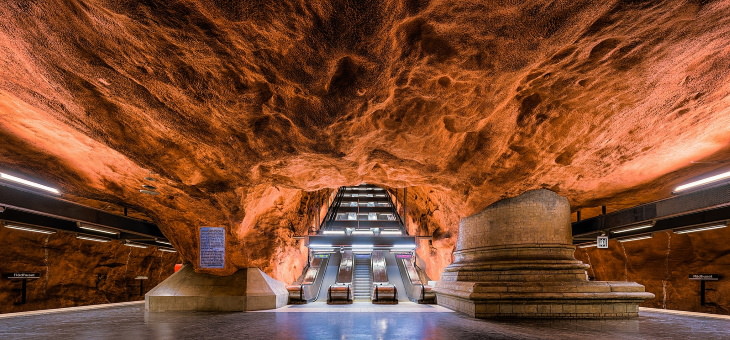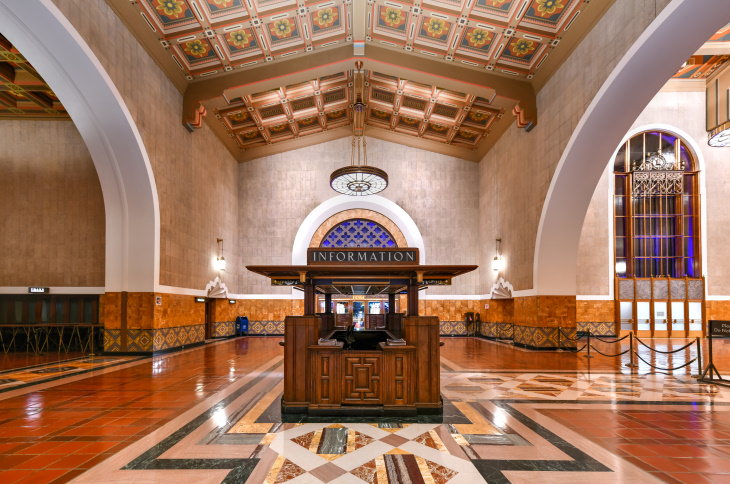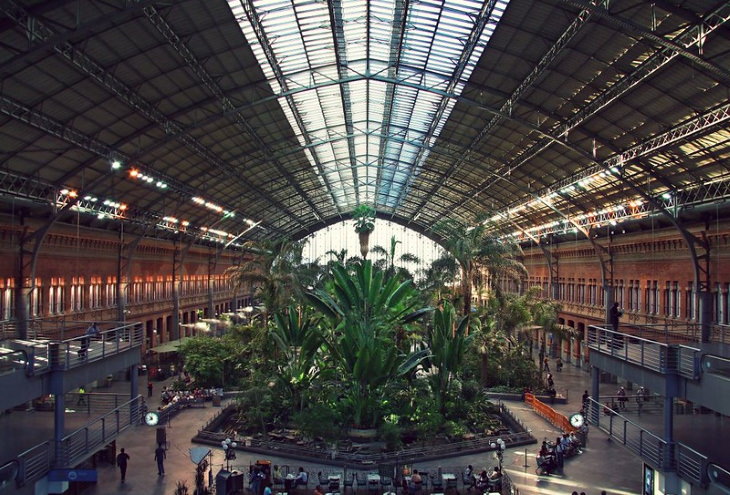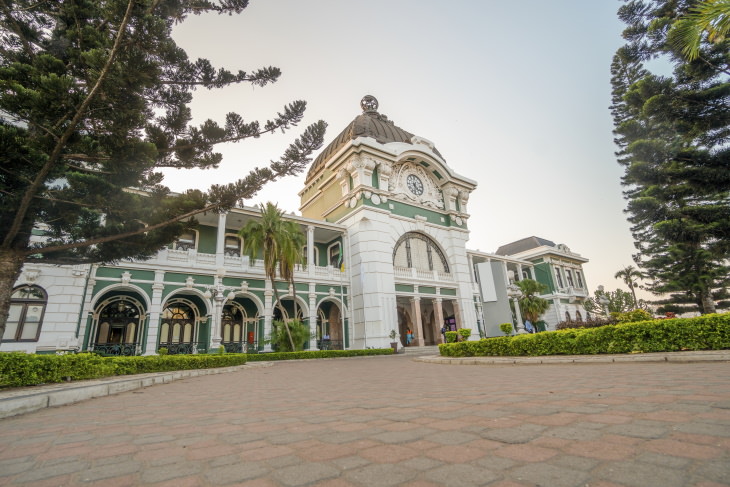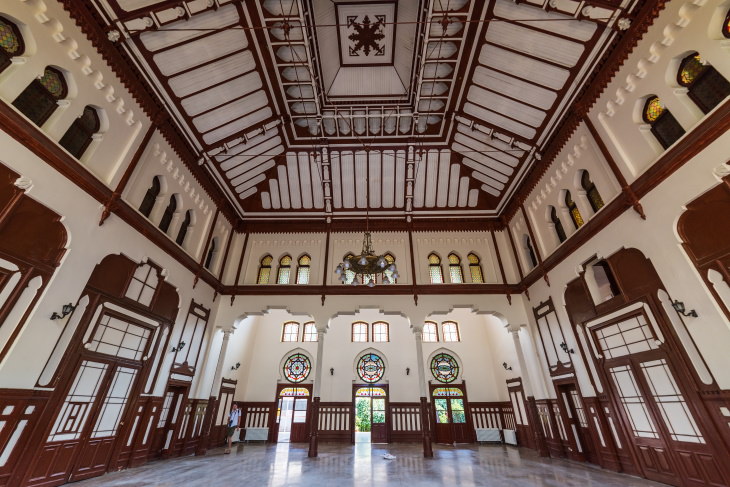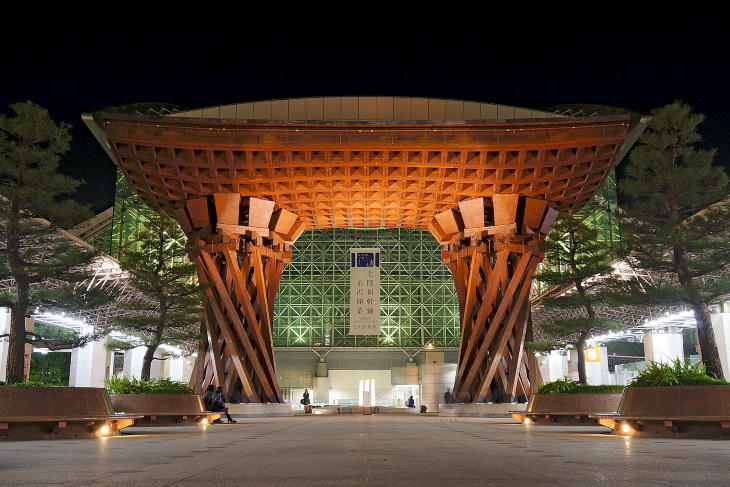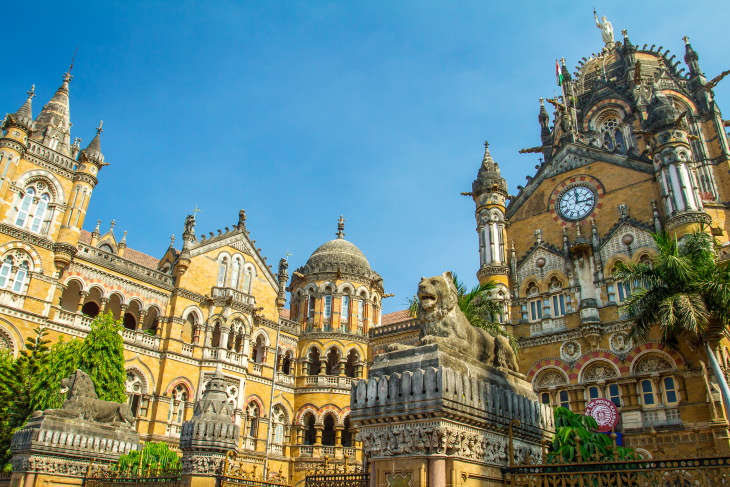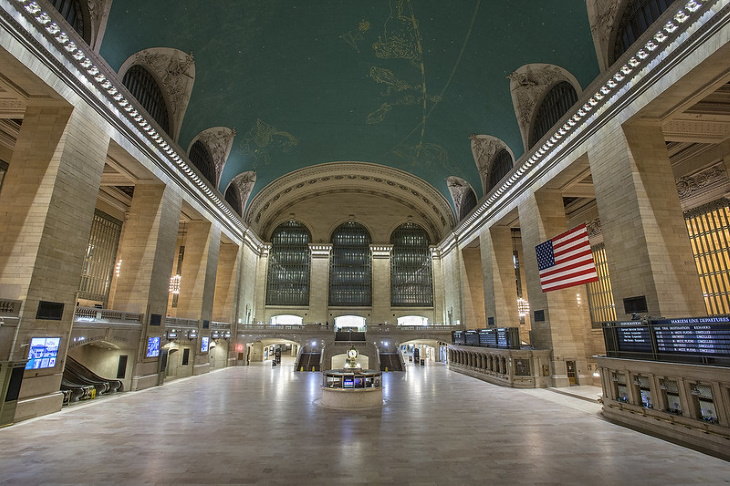1. Antwerpen-Centraal railway station in Antwerp, Belgium
Belgium is one of those countries one should definitely explore by train. Traveling through the railway stations alone is a pure delight for every aesthete. As a matter of fact, the first two train stations on this list - one historical and one very modern - are located in this small Western European country.
The Antwerpen-Centraal railway station is a rare architectural gem that reveals the refined and artistic nature of the city immediately upon your arrival. Built at the turn of the 20th century (1895-1905), this train station has been often pronounced the finest in the country and even in the world. The tall waiting hall of the Antwerp station is particularly beautiful. It has a partly transparent glass roof that invites plenty of light, tall arched windows, as well as walls and floors decked with 20 kinds of stone and marble.
2. Liège-Guillemins Railway Station in Liege, Belgium
You may not be particularly familiar with Liège, but it’s a major commercial hub in the industrial region of Belgium, which is partly why it has one of the largest railway junctions in the entire country. The contemporary railway station was completed in 2009 by the renowned architect Santiago Calatrava, and it is one of the finest examples of his signature style. Made of steel, glass, and concrete, the railway station shaped like a massive wave. The all-white train station has a spacious, open, and almost aetherial look to it.
3. Rådhuset Metro Station in Stockholm, Sweden
The Stockholm metro is considered to be one of the most beautifully-designed subway systems in the world. The uniqueness of its design lies in the way the architects decided to embrace the organic look of the stations. A prime example of this is the Rådhuset station, where the bedrock is left exposed and uncolored, giving the metro station the appearance of a massive cave.
But the interior of the station itself is not the only reason why all tourists visit the Stockholm metro. Of the 100 subway stations in the Swedish capital, 90 display paintings, engraving, sculptures, and other forms of art in what is often called “the world’s longest art gallery.” An art gallery everyone can visit and admire, how marvelous!
4. Union Station in Los Angeles, California, USA
The Union Station is a massive travel hub. According to some estimates, the terminal is the largest in the Western United States. And the stunning design of the Union Station certainly reflects its importance too! The central building of Union Station was designed by architects John and Donald Parkinson and opened in 1939.
The father-son architect duo married two prominent styles at the time - Art Deco and Spanish Colonial Style - within this structure. In the grand waiting hall, for example, the travertine marble floors and floral interior decorations are beautifully contrasted against what appears to be a wooden ceiling that is actually made of steel.
5. Amsterdam Centraal Station in Amsterdam, Netherlands
Looking at the photos of Amsterdam’s Centraal Station, you may have noticed that it looks rather massive. If that thought ran through your mind, you would be right, as this is the largest railway station in the entire European Union. The neo-Renaissance building was designed by Dutch architect Pierre Cuypershas, and it has been operational since 1889.
The tall, cathedral-looking building has an impressive cast-iron platform roof and accommodates around 260,000 passengers on a daily basis. Many consider the Centraal Station to be one of the most wonderful structures in Amsterdam.
6. Paris Gare de Lyon in Paris, France
Parisian train stations are famously stunning, and the Gare de Lyon is a prime example of that. There are six train stations in the French capital, and the Gare de Lyon is located on the right bank of the Seine in the 12th district, or arrondissement.
Gare de Lyon was constructed in preparation for the 1900 Paris World Exposition by Marius Toudoire and adorned with a fresco by the artist Jean-Baptiste Olive. The most notable feature of the railway hub is a large clock tower that’s often compared to London’s Big Ben. Another famous landmark at Gare de Lyon is the Le Train Bleu restaurant, which has been open since 1901.
7. Estación de Atocha in Madrid, Spain
The Estación de Atocha is no ordinary train station. It is part commuter hub and part greenhouse - there’s a 43,056 square feet (4,000 km sq) tropical garden right in the middle of the waiting hall. The modern-day Atocha station was rebuilt in 1892 on the ruins of the original station that was badly damaged by a fire.
Alberto de Palacio Elissagne and Alexandre-Gustave Eiffel, who had finished the Eiffel Tower only a few years prior, have collaborated to create this unique beauty. The train station has a 27 meter (almost 90 ft) tall glass and wrought iron roof that helps sustain the tropical plants that grow within the stain. The Estación de Atocha is the largest train station in Spain.
8. Maputo Railway Station in Maputo, Mozambique
The Maputo Railway Station is a historic building in the capital of Mozambique. Constructed at the beginning of the 20th century by Ferreira da Costa, Augusto Lisboa de Lima, Mario Veiga in the Neoclassical Beaux-Arts style, this station is a hidden gem that stands out against its uncluttered surroundings. The mint green and white building is an example of Portuguese colonial architecture, and it features a copper central dome, marble detailing, and wrought iron lattices.
There’s also a historic display of old steam locomotives in Maputo Railway Station.
9. Sirkeci Railway Station in Istanbul, Turkey
Attention, all readers, we are now boarding the famous Orient Express and traveling to its eastern terminus - the historic Sirkeci Railway Station. Completed in 1890 by August Jasmund, the magnificent railway station marries Ottoman aesthetics with Art Nouveau. With its colorful stained-glass windows, a red brick facade that contrasts with the white interior, and antique clock towers, the stunning building looks more like an art gallery than a train station.
Over the years, Sirkeci Railway Station became a symbol of the city of Istanbul and one of its must-see tourist destinations.
10. Kanazawa Station in Kanazawa, Japan
When you first arrive at the ultra-modern glass and steel terminal of the Kanazawa station, you wouldn’t believe that it was built in 1898. The Tsuzumi Gate at the eastern entrance to the station is one of the few structures that hint at the long history of this building. A true marvel, the gate is built entirely from the wood of the Japanese cypress and is designed to be reminiscent of the traditional Tsuzumi drums.
As you already suspect, the station was updated in 2005. Upon closer inspection, however, the new station has many other symbolic elements. For example, 24 wooden pillars decorated with traditional artworks support the central concourse of the building. These artworks represent Kanazawa’s cultural heritage as Japan’s center of artisanal woodwork, lacquerware, and ceramics.
11. Chhatrapati Shivaji Terminus in Mumbai, India
It isn’t often that a train station makes it on the list of UNESCO World Heritage Sites, but the historic Chhatrapati Shivaji Terminus made this list with ease. Formerly named the Victoria Terminus Station, this majestic structure is a blend of Victorian gothic architecture with traditional Indian motifs. Designed by architect FW Stevens and built over the course of 10 years, the station opened in 1887.
The iconic facade of the building features domes, turrets, arches, and windows embellished with stone carvings of local plants and animals as well as legendary creatures. The interior of the building features has vaulted ceilings supported by tall columns and an octagonal masonry dome above the central hall. Fun fact - can you believe that 3 million commuters pass through the Chhatrapati Shivaji Terminus every day?
12. Grand Central Terminal in New York City, USA
No list of iconic train stations would be complete without mentioning the Grand Central Terminal in Midtown Manhattan. After all, it is the largest train terminal in the world and a symbol of New York City. Completed in 1913, the current building is the second iteration of the Grand Central Terminal that was designed by two architecture firms - Warren & Wetmore and Reed & Stem.
The grand hall is famous for its domed celestial ceiling with painted zodiac constellations and a four-faced brass clock above the information booth. Then, there are also the marble staircases, the Tiffany clock on the facade at 42nd Street, and the Grand Central Oyster Bar, a beautiful restaurant famous for its authentic historical interior and terracotta ceilings. Even if you’re not taking a train from Grand Central while visiting the City, you must see this marvelous train station!
Share these beautiful train stations with family and friends!

